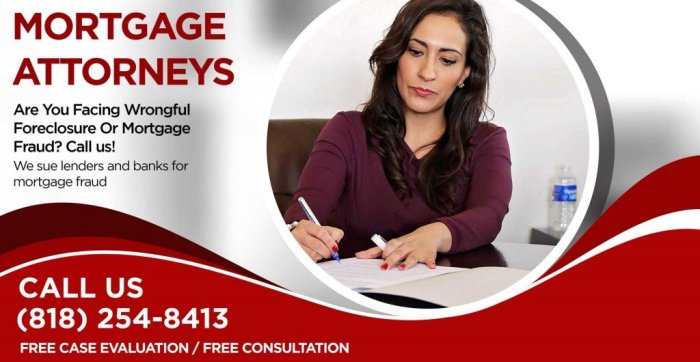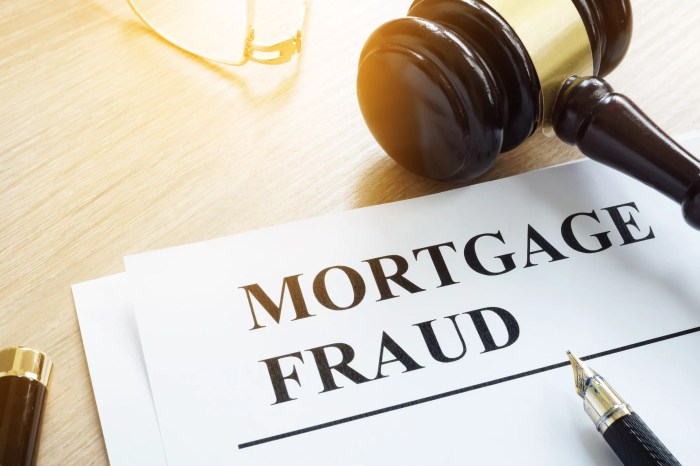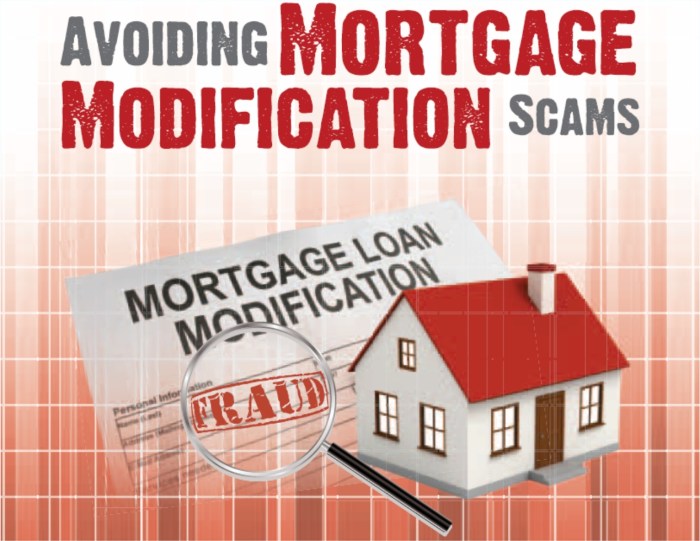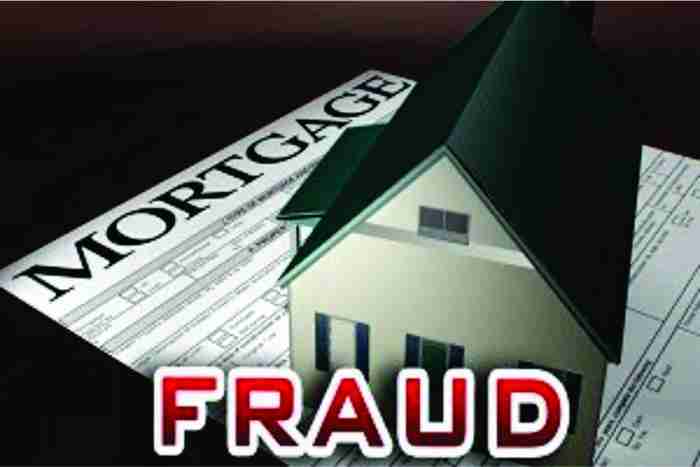When it comes to mortgage fraud, the stakes are high, and having an experienced Attorney for Mortgage Fraud on your side can make all the difference. Our team of skilled attorneys provides comprehensive legal representation to individuals and entities facing mortgage fraud allegations, ensuring their rights are protected throughout the complex legal process.
We understand the intricacies of mortgage fraud laws and regulations, and we are committed to providing tailored legal strategies that meet the unique needs of each client. Our goal is to achieve the best possible outcome, whether through aggressive defense, strategic negotiations, or alternative dispute resolution.
Legal Consequences of Mortgage Fraud
Mortgage fraud is a serious crime that can have severe consequences for both individuals and the economy as a whole. This type of fraud involves the intentional misrepresentation or omission of material facts in order to obtain a mortgage loan.
It is a federal crime punishable by fines and imprisonment, and it can also result in civil liabilities, such as rescission, damages, and injunctions.
Criminal Penalties
The criminal penalties for mortgage fraud vary depending on the severity of the offense. Under federal law, individuals convicted of mortgage fraud can face up to 30 years in prison and fines of up to $1 million. State laws also impose criminal penalties for mortgage fraud, which can include fines, imprisonment, and restitution.
Civil Liabilities
In addition to criminal penalties, individuals who commit mortgage fraud can also be held liable for civil damages. These damages can include the amount of the loan, plus interest, penalties, and attorney fees. In some cases, individuals who have been the victims of mortgage fraud may also be able to rescind the loan, which means that they can get their property back and the lender cannot collect on the loan.
Common Mortgage Fraud Schemes
There are many different types of mortgage fraud schemes, but some of the most common include:
- Straw buyers: A straw buyer is someone who purchases a property on behalf of another person, who is the actual borrower. This is often done to help the borrower qualify for a loan that they would not otherwise be able to obtain.
- Equity stripping: Equity stripping is a scheme in which a borrower takes out a loan against their home for more than the property is worth. The borrower then uses the proceeds from the loan to pay off other debts or to purchase another property.
- Property flipping: Property flipping is a scheme in which a borrower purchases a property with the intent to quickly sell it for a profit. This is often done by making false statements about the property’s condition or value.
Dodd-Frank Wall Street Reform and Consumer Protection Act
The Dodd-Frank Wall Street Reform and Consumer Protection Act was passed in 2010 in response to the financial crisis of 2008. This law includes a number of provisions designed to combat mortgage fraud, such as:
- Requiring lenders to verify the income and assets of borrowers
- Prohibiting lenders from making loans to borrowers who cannot afford them
- Creating a new federal agency to investigate and prosecute mortgage fraud
Impact of Mortgage Fraud
Mortgage fraud has a significant impact on the housing market and the economy as a whole. It can lead to:
- Increased foreclosures
- Decreased home values
- Reduced lending
- Loss of jobs
Defenses to Mortgage Fraud Allegations

Mortgage fraud allegations can have severe consequences, but there are defenses available to those accused of this crime. Understanding the elements of proof required to establish mortgage fraud, the role of intent, and common defenses can help individuals navigate the legal process effectively.
Establishing Mortgage Fraud
Prosecutors must prove several elements to establish mortgage fraud, including:
- That the defendant knowingly made false statements or misrepresentations on a mortgage application or related documents.
- That the defendant intended to deceive the lender.
- That the lender relied on the false statements or misrepresentations in approving the mortgage.
- That the defendant obtained or attempted to obtain a financial benefit as a result of the fraud.
Intent and Mortgage Fraud
Intent is a crucial element in mortgage fraud cases. Prosecutors must prove that the defendant acted with the specific intent to deceive the lender and obtain a financial benefit. Mere negligence or mistakes on the mortgage application are not sufficient to establish fraud.
Common Defenses to Mortgage Fraud Allegations
There are several common defenses to mortgage fraud allegations, including:
- Lack of intent:The defendant did not intend to deceive the lender and made a genuine mistake on the mortgage application.
- Reliance on third-party information:The defendant relied on information provided by a third party, such as a real estate agent or loan officer, and had no reason to believe it was false.
- Good faith belief:The defendant believed the information on the mortgage application was accurate and had a reasonable basis for that belief.
- Statute of limitations:The prosecution failed to bring the charges within the applicable statute of limitations.
Case Law and Statutory Provisions
Numerous case laws and statutory provisions govern mortgage fraud. These include:
- 18 U.S.C. § 1014: False statements or entries in loan applications
- 12 U.S.C. § 2601: Real Estate Settlement Procedures Act (RESPA)
- 31 U.S.C. § 5324: False claims against the government
Ethical Considerations
Attorneys defending mortgage fraud cases have ethical obligations to their clients, the court, and the public. These include:
- Providing zealous advocacy for their clients while adhering to ethical and legal standards.
- Investigating the facts thoroughly and presenting a complete and accurate defense.
- Avoiding conflicts of interest and maintaining confidentiality.
Table of Common Defenses
The following table summarizes common defenses to mortgage fraud allegations, along with their strengths and weaknesses:
| Defense | Strengths | Weaknesses |
|---|---|---|
| Lack of intent | Can be difficult to prove | Requires strong evidence of genuine mistake |
| Reliance on third-party information | Can be a valid defense if the defendant had no reason to doubt the information | Can be difficult to prove if the third party is unavailable or unreliable |
| Good faith belief | Can be a strong defense if the defendant can show they had a reasonable basis for their belief | Can be difficult to prove if the belief is based on speculation or wishful thinking |
| Statute of limitations | Can be a complete defense if the prosecution fails to bring the charges within the applicable time period | Can be difficult to establish if the defendant has engaged in ongoing fraudulent conduct |
Resources for Further Research
- National Mortgage Fraud Working Group: https://www.mortgagefraudworkinggroup.org/
- Federal Trade Commission: https://www.ftc.gov/news-events/media-resources/protecting-consumers/mortgage-fraud
- American Bar Association: https://www.americanbar.org/groups/real_property_trust_estate/committees/mortgage_foreclosure/articles/2021/10/mortgage-fraud-an-overview-of-current-issues-and-trends/
Ethical Considerations for Attorneys
Attorneys representing clients accused of mortgage fraud have a duty to zealously advocate for their clients while adhering to ethical obligations. Maintaining attorney-client privilege and avoiding complicity in mortgage fraud are key challenges in these cases.
Attorney-Client Privilege
Maintaining attorney-client privilege is crucial in mortgage fraud cases, as clients may disclose sensitive information. Attorneys must:* Advise clients about the limits of privilege, including exceptions such as the crime-fraud exception.
- Protect privileged communications by using secure methods of communication and storage.
- Avoid sharing privileged information with third parties without client consent or legal authorization.
Avoiding Complicity
Attorneys must take steps to avoid becoming complicit in mortgage fraud. This includes:* Carefully reviewing case materials to identify potential fraud.
- Advising clients about the legal consequences of mortgage fraud and the importance of truthful disclosures.
- Withdrawing from representation if the attorney believes the client is committing fraud or refuses to cooperate in the attorney’s ethical obligations.
By adhering to these ethical considerations, attorneys can ensure they are representing their clients effectively while upholding their professional responsibilities.
Investigation and Discovery
To effectively investigate and discover mortgage fraud allegations, it is crucial to have a comprehensive plan in place. This involves identifying key documents and evidence, as well as developing a discovery strategy to obtain relevant information from opposing parties.
Key Documents and Evidence
The following table Artikels key documents and evidence to gather during an investigation of mortgage fraud allegations:
| Document/Evidence | Importance |
|---|---|
| Loan application | Provides information about the borrower’s financial situation and the terms of the loan. |
| Appraisal | Determines the value of the property and ensures that the loan amount is not excessive. |
| Closing documents | Provide evidence of the final loan terms and the distribution of funds. |
| Financial records | Show the borrower’s income, assets, and liabilities. |
| Property inspection report | Identifies any defects or issues with the property that could affect its value. |
Discovery Strategy
To obtain relevant information from opposing parties, a discovery strategy should be designed. This may involve:
- Interrogatories: Written questions that must be answered under oath.
- Requests for production of documents: Demands for specific documents or records.
- Depositions: Oral examinations of witnesses under oath.
- Independent medical examinations: To assess the physical or mental condition of a party.
Trial Strategies
Preparing for trial in mortgage fraud cases requires a comprehensive strategy that considers the unique challenges and complexities of these cases. Effective trial preparation involves developing a solid framework, identifying key witnesses and experts, and carefully selecting the jury.
A well-defined framework for trial preparation should include:
- Thorough investigation and discovery to gather all relevant evidence.
- Identification and analysis of potential legal defenses.
- Development of a compelling narrative that presents the case in a clear and persuasive manner.
Key Witnesses and Experts
The prosecution and defense will typically call a range of witnesses and experts to support their respective cases. Key witnesses may include:
- Loan officers and underwriters involved in the mortgage transaction.
- Appraisers who valued the property.
- Mortgage brokers and real estate agents.
Experts may be called to provide testimony on specific issues, such as:
- Mortgage industry standards and practices.
- Real estate valuation.
- Forensic accounting.
Jury Selection
Jury selection is crucial in mortgage fraud trials. The defense should carefully consider the following factors:
- Occupation and background of potential jurors.
- Knowledge and experience with mortgage lending and real estate.
- Biases or prejudices that may affect their ability to fairly evaluate the evidence.
By selecting a jury that is receptive to the defense’s arguments and evidence, the defense can increase the chances of a favorable outcome.
Sentencing and Appeals

Mortgage fraud convictions carry serious consequences, including imprisonment, fines, and restitution. Sentencing for mortgage fraud is based on several factors, including the severity of the fraud, the amount of loss caused, and the defendant’s criminal history.
Sentencing Considerations
*
- Severity of the fraud:This includes the type of fraud committed, the extent of the fraud, and the sophistication of the scheme.
- Amount of loss:The greater the financial loss caused by the fraud, the more severe the sentence is likely to be.
- Defendant’s criminal history:Prior convictions for fraud or other financial crimes can increase the sentence.
Appeals Process
If a defendant is convicted of mortgage fraud, they have the right to appeal the conviction. The appeals process involves filing a notice of appeal and then submitting a brief to the appellate court. The appellate court will review the record of the trial court and decide whether there were any errors that warrant overturning the conviction.
Mitigating Consequences
There are several steps defendants can take to mitigate the consequences of a mortgage fraud conviction, including:*
- Cooperating with the government:Providing information about the fraud and cooperating with the investigation can lead to a reduced sentence.
- Making restitution:Repaying the victims of the fraud can demonstrate remorse and reduce the sentence.
- Hiring an experienced attorney:An experienced attorney can help defendants navigate the sentencing and appeals process and can advocate for a reduced sentence.
Civil Remedies

Mortgage fraud victims have various civil remedies available to them. These remedies aim to compensate for the losses suffered and deter future fraudulent activities.
Filing a Civil Lawsuit
Victims can file a civil lawsuit against the perpetrator of mortgage fraud. The lawsuit should clearly state the allegations of fraud, the damages suffered, and the relief sought. The burden of proof lies with the victim, who must demonstrate the fraud and the resulting damages.
Damages Recoverable
In mortgage fraud cases, victims can recover several types of damages, including:
- Actual Damages:These represent the actual financial losses incurred due to the fraud, such as the difference between the property’s actual value and the loan amount.
- Consequential Damages:These are damages that result from the actual damages, such as lost profits or emotional distress.
- Punitive Damages:These are awarded to punish the perpetrator and deter future fraud.
– Provide examples of successful investigations and prosecutions of mortgage fraud by federal and state agencies.

Mortgage fraud is a serious crime that can have devastating consequences for victims and the economy as a whole. In recent years, there have been a number of successful investigations and prosecutions of mortgage fraud by federal and state agencies.
One example is the case of the “Operation Stolen Dreams” investigation, which was led by the FBI and involved multiple federal and state agencies. The investigation resulted in the indictment of more than 100 individuals and the recovery of more than $1 billion in stolen funds.
State Agencies
State agencies have also been successful in investigating and prosecuting mortgage fraud. For example, the California Department of Real Estate (DRE) has a dedicated Mortgage Fraud Strike Force that has investigated and prosecuted numerous cases of mortgage fraud.
Prevention and Education: Attorney For Mortgage Fraud
Mortgage fraud is a serious crime that can have devastating consequences for individuals, families, and the economy as a whole. It’s important to be aware of the different types of mortgage fraud and to take steps to protect yourself from becoming a victim.One of the best ways to prevent mortgage fraud is to educate yourself about the different types of schemes that fraudsters use.
Common mortgage fraud schemes include:
- Equity skimming:This occurs when a fraudster takes out a mortgage on a property and then fails to make the payments. The fraudster then sells the property to an unsuspecting buyer, who is left with the mortgage debt.
- Foreclosure rescue scams:These scams target homeowners who are facing foreclosure. The fraudster promises to help the homeowner save their home by modifying the loan or selling it for a quick sale. However, the fraudster often charges high fees and does not deliver on their promises.
- Loan modification scams:These scams target homeowners who are struggling to make their mortgage payments. The fraudster promises to help the homeowner modify their loan, but they often charge high fees and do not deliver on their promises.
You can protect yourself from mortgage fraud by taking the following steps:
- Be aware of the different types of mortgage fraud schemes.
- Get pre-approved for a mortgage before house hunting.
- Only work with reputable lenders and real estate agents.
- Never sign documents you don’t understand.
It’s also important to educate consumers about mortgage fraud. Consumers should be aware of the signs of mortgage fraud, the consequences of mortgage fraud, and where to report suspected mortgage fraud.Industry professionals also play a role in preventing mortgage fraud.
Lenders can verify borrower information and report suspicious activity. Real estate agents can educate clients about mortgage fraud and refer them to reputable lenders. Attorneys can review loan documents and explain the legal implications of mortgage fraud.By working together, we can prevent mortgage fraud and protect consumers from this devastating crime.
Resources for Consumers
- Federal Trade Commission: https://www.ftc.gov/mortgage-fraud
- Consumer Financial Protection Bureau: https://www.consumerfinance.gov/mortgage-fraud/
- National Association of Realtors: https://www.nar.realtor/mortgage-fraud
- American Bar Association: https://www.americanbar.org/groups/real_property_trust_estate/publications/reptl/2021/01/mortgage-fraud-protecting-consumers-and-the-market/
Case Studies
Mortgage fraud remains a significant concern, with cases emerging in various forms. By analyzing real-life examples, we can glean valuable insights into successful investigations, prosecution strategies, and lessons learned.
Through case studies, we aim to highlight effective approaches to preventing and detecting mortgage fraud, thereby contributing to the protection of individuals and the financial system as a whole.
Case Study of a Mortgage Fraud Scheme
Summary of Facts
In 2016, a mortgage broker and several accomplices were charged with orchestrating a complex mortgage fraud scheme involving over $10 million in fraudulent loans.
The defendants recruited “straw buyers” with good credit to purchase properties using false income and asset information. The defendants then inflated the appraised values of the properties, enabling the straw buyers to obtain larger loans.
Analysis of Legal Issues
The defendants were charged with multiple counts of wire fraud, bank fraud, and conspiracy to commit fraud.
The prosecution argued that the defendants knowingly and intentionally misled lenders by providing false information on loan applications and appraisal reports.
Outcome of the Case
After a lengthy trial, the jury found the defendants guilty on all counts. The mortgage broker was sentenced to 10 years in prison, while the accomplices received lesser sentences.
Recommendations for Prevention
This case highlights the importance of due diligence in mortgage lending.
- Lenders should verify income and asset information thoroughly.
- Appraisers should be independent and unbiased.
- Straw buyer schemes can be detected by monitoring for unusual patterns of home purchases.
Emerging Trends in Mortgage Fraud
Mortgage fraud is a constantly evolving crime, with new trends emerging all the time. Artificial intelligence (AI) and machine learning (ML) are two of the latest technologies that are being used to facilitate mortgage fraud. These technologies can be used to create fake documents, automate the process of applying for mortgages, and even predict which loans are most likely to be approved.The use of AI and ML in mortgage fraud poses a number of challenges for law enforcement and the legal profession.
First, these technologies can make it more difficult to detect fraud. Traditional methods of fraud detection rely on human beings to identify suspicious patterns. However, AI and ML can be used to create sophisticated schemes that are difficult to spot.
Second, these technologies can make it more difficult to investigate fraud. Once fraud has been detected, investigators need to be able to trace the money and identify the people involved. However, AI and ML can be used to hide the tracks of fraudsters.
Third, these technologies can make it more difficult to prosecute fraud. Prosecutors need to be able to prove that fraudsters intended to deceive lenders. However, AI and ML can be used to create evidence that suggests that fraudsters were simply making mistakes.
Strategies for Combating Emerging Trends in Mortgage Fraud
[detailed content here]
Legal Malpractice

Mortgage fraud cases pose significant legal malpractice risks for attorneys. Attorneys can be held liable for negligence, breach of contract, or breach of fiduciary duty if they fail to exercise reasonable care in representing their clients.
- Negligence:Attorneys can be held liable for negligence if they fail to meet the standard of care required of attorneys in their jurisdiction. This can include failing to properly investigate the facts of the case, failing to advise the client of the risks involved in the transaction, or failing to properly draft or review the loan documents.
- Breach of Contract:Attorneys can also be held liable for breach of contract if they fail to fulfill the terms of their retainer agreement with the client. This can include failing to provide the agreed-upon services, failing to achieve the desired outcome, or failing to communicate with the client in a timely manner.
- Breach of Fiduciary Duty:Attorneys owe a fiduciary duty to their clients, which means that they must act in the client’s best interests. Attorneys can be held liable for breach of fiduciary duty if they fail to disclose conflicts of interest, if they engage in self-dealing, or if they otherwise act in a way that is not in the client’s best interests.
Defenses to Legal Malpractice Claims
There are a number of defenses that attorneys can assert to legal malpractice claims in mortgage fraud cases. These defenses include:
- Statute of Limitations:The statute of limitations for legal malpractice claims varies from state to state, but it typically begins to run from the date of the alleged malpractice. Attorneys can assert the statute of limitations as a defense if the client fails to file a claim within the applicable time period.
- Lack of Causation:Attorneys can also assert the defense of lack of causation if they can show that the client’s damages were not caused by the attorney’s alleged malpractice. For example, if the client would have lost the case even if the attorney had not committed malpractice, the attorney may be able to avoid liability.
- Comparative Negligence:In some jurisdictions, attorneys can assert the defense of comparative negligence if they can show that the client was also negligent in contributing to the damages. For example, if the client failed to provide the attorney with all of the relevant information, the attorney may be able to reduce their liability by arguing that the client’s own negligence contributed to the damages.
Guidance on How Attorneys Can Avoid Legal Malpractice Claims
Attorneys can take a number of steps to avoid legal malpractice claims in mortgage fraud cases. These steps include:
- Properly Investigate the Facts:Attorneys should thoroughly investigate the facts of the case before providing any advice to the client. This includes reviewing all of the relevant documents, interviewing the client and any witnesses, and conducting a title search.
- Advise the Client of the Risks:Attorneys should advise the client of all of the risks involved in the transaction. This includes the risks of losing the case, the risks of being held liable for damages, and the risks of being prosecuted for mortgage fraud.
- Properly Draft and Review the Loan Documents:Attorneys should properly draft and review all of the loan documents. This includes ensuring that the documents are accurate and complete, and that they comply with all applicable laws.
- Communicate with the Client:Attorneys should communicate with the client in a timely and effective manner. This includes keeping the client informed of the status of the case, responding to the client’s questions, and providing the client with copies of all relevant documents.
– Ethical Considerations
Attorneys representing both the borrower and the lender in mortgage fraud cases face potential conflicts of interest. These conflicts can arise when the interests of the borrower and lender are not aligned, such as when the borrower is accused of committing fraud against the lender.
In such cases, the attorney must carefully consider the potential for conflicts of interest and take steps to avoid or mitigate any actual conflicts.
Duty to Disclose and Obtain Informed Consent
Attorneys have a duty to disclose potential conflicts of interest to both the borrower and the lender and to obtain informed consent from both parties before representing either party. This disclosure should include a clear explanation of the potential conflicts of interest, the steps the attorney will take to avoid or mitigate the conflicts, and the consequences of not resolving the conflicts.
Best Practices for Avoiding Conflicts of Interest, Attorney for mortgage fraud
There are a number of best practices that attorneys can follow to avoid or mitigate conflicts of interest in mortgage fraud cases. These best practices include:
- Avoiding representing both the borrower and the lender in the same case.
- If representing both the borrower and the lender, obtaining written consent from both parties after fully disclosing the potential conflicts of interest.
- Establishing clear boundaries between the representation of the borrower and the lender.
- Avoiding sharing confidential information between the borrower and the lender.
- Withdrawing from the representation if a conflict of interest cannot be avoided or mitigated.
Alternative Dispute Resolution
Alternative dispute resolution (ADR) offers an effective means to resolve mortgage fraud cases outside of traditional court proceedings. ADR methods provide numerous benefits, including reduced costs, increased efficiency, and the potential for preserving relationships between parties. However, ADR also presents challenges, such as the need for experienced facilitators and the potential for bias or unfairness.
Types of ADR Methods
Various ADR methods are applicable to mortgage fraud cases, each with its unique advantages and drawbacks.
- Mediation:A neutral third party facilitates a dialogue between disputing parties, assisting them in reaching a mutually acceptable resolution.
- Arbitration:A neutral third party, known as an arbitrator, hears evidence and issues a binding decision.
- Negotiation:Direct discussions between the parties, often facilitated by an attorney or other intermediary.
- Conciliation:A neutral third party assists parties in identifying common ground and developing a settlement agreement.
Choosing the Right ADR Method
The choice of ADR method depends on several factors, including the nature of the dispute, the parties’ willingness to cooperate, and the desired outcome. Mediation and negotiation are generally preferred when preserving relationships is a priority. Arbitration is suitable for cases requiring a binding decision, while conciliation can be beneficial when parties need guidance in finding common ground.
International Perspectives
Mortgage fraud, a global issue, has prompted countries worldwide to implement laws and regulations to combat it. Understanding these varying regulations and the challenges of cross-border investigations is crucial for effective international cooperation in combating mortgage fraud.
Cross-Border Investigations and Prosecutions
Cross-border mortgage fraud investigations and prosecutions pose unique challenges due to jurisdictional boundaries, differing legal systems, and varying levels of cooperation between countries. Coordinating efforts between different jurisdictions requires extensive communication, mutual legal assistance treaties, and a shared understanding of the laws and procedures involved.
Best Practices for International Cooperation
To enhance international cooperation, countries should adopt best practices such as establishing specialized units dedicated to investigating and prosecuting mortgage fraud, fostering information sharing between law enforcement agencies, and providing training to enhance cross-border collaboration.
Table: Key Laws and Regulations Governing Mortgage Fraud
| Country | Key Laws and Regulations ||—|—|| United States | Dodd-Frank Wall Street Reform and Consumer Protection Act || United Kingdom | Fraud Act 2006 || Canada | Criminal Code of Canada || Australia | National Consumer Credit Protection Act 2009 || India | Indian Penal Code |
Conclusion
International cooperation is essential to effectively combat mortgage fraud. By sharing best practices, enhancing cross-border collaboration, and fostering mutual understanding of laws and regulations, countries can work together to prevent and prosecute mortgage fraud on a global scale.
Ending Remarks

Navigating the legal complexities of mortgage fraud requires a deep understanding of the law and a commitment to protecting your interests. Our team of experienced attorneys is here to guide you through every step of the process, ensuring that your rights are upheld and your financial well-being is safeguarded.
Query Resolution
What are the common types of mortgage fraud?
Mortgage fraud schemes can vary, but some common types include: straw buyers, equity stripping, property flipping, and fraudulent appraisals.
What are the potential consequences of mortgage fraud?
Mortgage fraud is a serious offense that can result in criminal charges, civil penalties, and damage to your credit and reputation.
How can an Attorney for Mortgage Fraud help me?
An experienced Attorney for Mortgage Fraud can provide legal guidance, represent you in court, negotiate with prosecutors, and help you protect your rights.